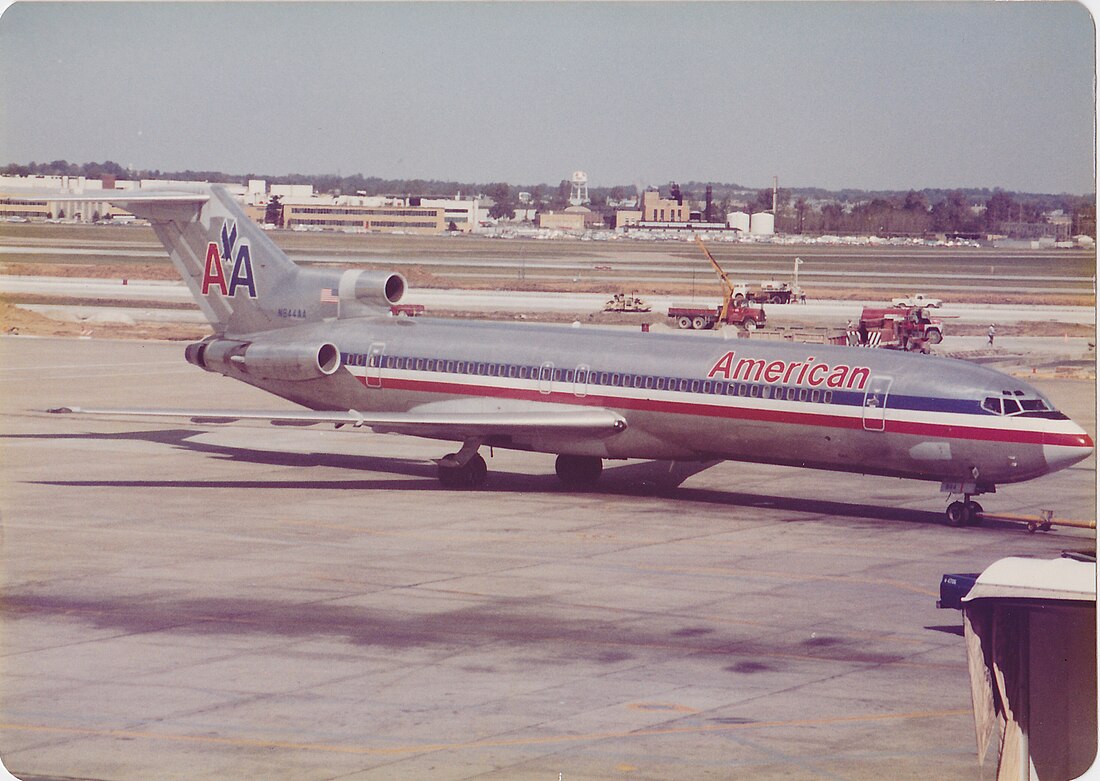Top Qs
Timeline
Chat
Perspective
2003 Angola Boeing 727 disappearance
Stolen aircraft incident at Quatro de Fevereiro Airport From Wikipedia, the free encyclopedia
Remove ads
On 25 May 2003, a Boeing 727-223 airliner, registered as N844AA, was stolen at Quatro de Fevereiro Airport in Luanda, Angola on the west-central coast of Southern Africa,[1] prompting a worldwide search by law enforcement and intelligence agencies in the United States. No trace of the aircraft has ever been found.
Remove ads
Background
The incident aircraft was a Boeing 727-223 airliner, serial number 20985,[2] manufactured in 1975 and operated by American Airlines for 25 years until 2000. Its last owner was reportedly a US company called Aerospace Sales & Leasing.[3] The aircraft had been grounded at Quatro de Fevereiro Airport in March 2002 and sat idle for fourteen months, accruing more than US$50,000 in unpaid airport fees. It was one of two aircraft there in the process of being converted for use by Nigerian IRS Airlines.[4][5] There are reports that the airplane's registration may have been changed to 5N-RIR, possibly as a fake registration.[6]
The United States Federal Bureau of Investigation (FBI) described the aircraft as "unpainted silver in color with a stripe of blue, white, and red. The [aircraft] was formerly in the air fleet of a major airline, but all of the passenger seats have been removed. It is outfitted to carry diesel fuel."[7]
Remove ads
Incident
Summarize
Perspective

On 25 May 2003, shortly before sunset (likely to be 17:00 WAT), it is believed that two men, Ben C. Padilla and John M. Mutantu, boarded the aircraft. Padilla was a pilot and flight engineer from the United States,[8] while Mutantu was a Congolese-French citizen hired mechanic from the Republic of the Congo.[1][9] A crew of three is required to fly a Boeing 727, and neither of the two were certified to fly it. U.S. authorities believe Padilla was at the controls.[10] An airport employee reported seeing only one person on board the aircraft at the time;[11] other airport officials stated two men boarded the aircraft before the incident.[12][13]
The aircraft began taxiing without communicating with the control tower. It maneuvered erratically and entered a runway without clearance. Air traffic controllers tried to make contact, but there was no response. With no lights, the aircraft took off, heading southwest over the Atlantic Ocean before disappearing.[1] Before the incident, the aircraft was filled with 53,000 litres (14,000 US gal) of fuel, giving it a range of about 2,400 kilometres (1,500 mi; 1,300 nmi).[13] Neither the aircraft nor the two men have been seen since, and no debris from the aircraft has been found.[1]
Remove ads
Hypotheses
Padilla's sister, Benita Padilla-Kirkland, told the South Florida Sun-Sentinel in 2004 that her family suspected that he had been flying the aircraft and feared that he subsequently crashed somewhere in Africa or was being held against his will,[14] a hypothesis shared by Aerospace Sales & Leasing president Maury Joseph, who had examined the plane two weeks before its disappearance. However, U.S. authorities suspected that Joseph's history of accounting fraud played a part, believing that the plane's theft was either caused by a business feud or resulted from a scam.[8]
In July 2003, a possible sighting of the missing aircraft was reported in Conakry, Guinea,[15][16][17] but was conclusively dismissed by the U.S. State Department.[18]
An extensive article published in Air & Space/Smithsonian magazine in September 2010 was unable to draw any conclusions on the fate of the aircraft, despite research and interviews with persons knowledgeable of details surrounding the disappearance.[1]
See also
- List of missing aircraft
- List of people who disappeared
- 2018 Horizon Air Q400 incident, in which a Bombardier Dash 8-Q400 was stolen from Seattle-Tacoma International Airport and crashed into Ketron Island
- 1990 Faucett Perú 727 disappearance, another instance of a 727 disappearance
- Varig Flight 967
- Malaysia Airlines Flight 370
- Flying Tiger Line Flight 739
References
Wikiwand - on
Seamless Wikipedia browsing. On steroids.
Remove ads


